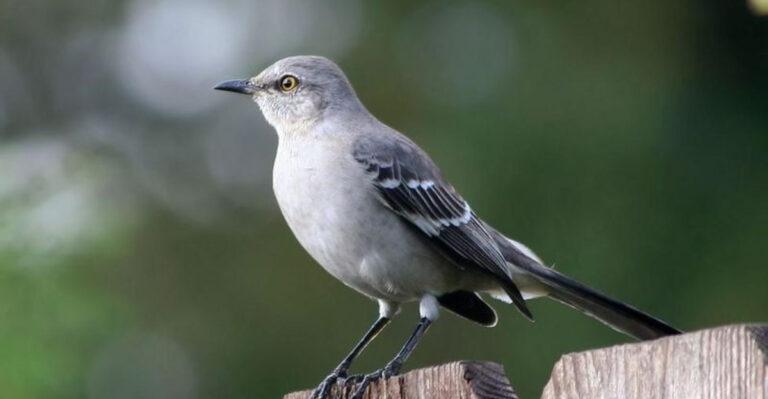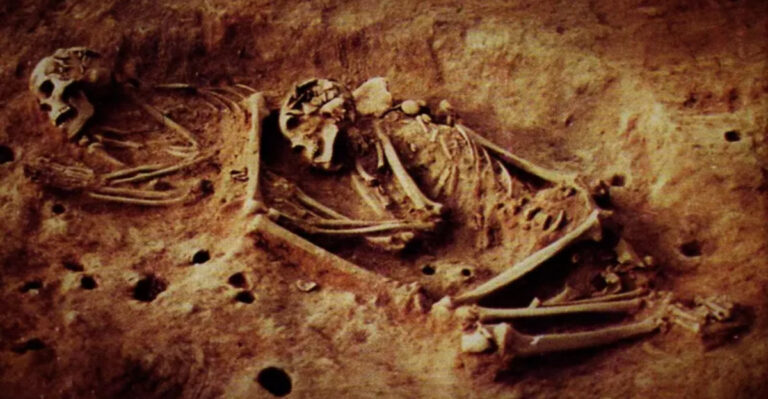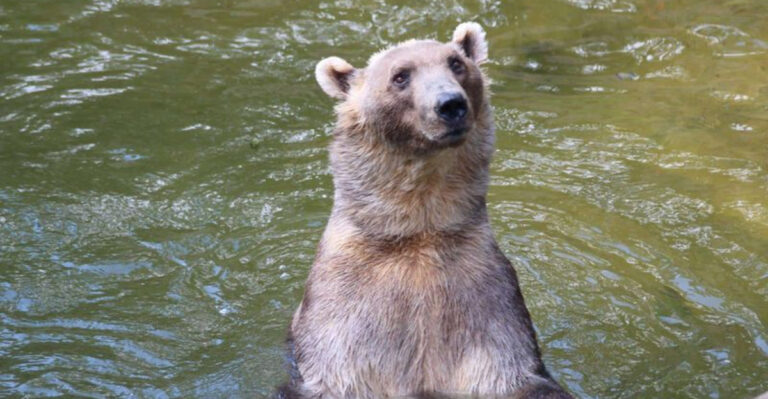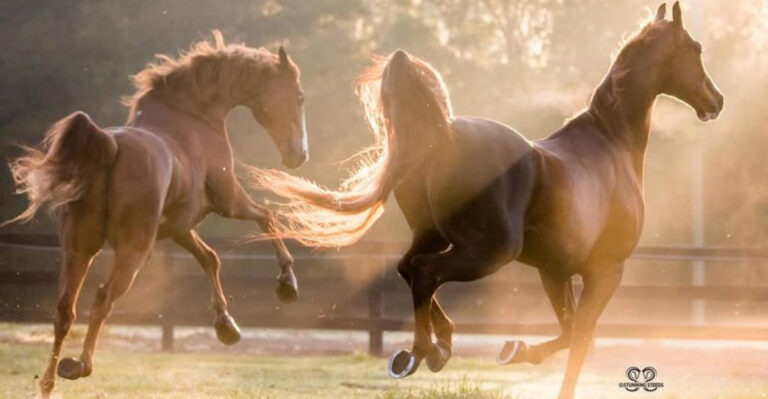Hummingbirds Aren’t Just Cute, They’re Essential For Flower Survival
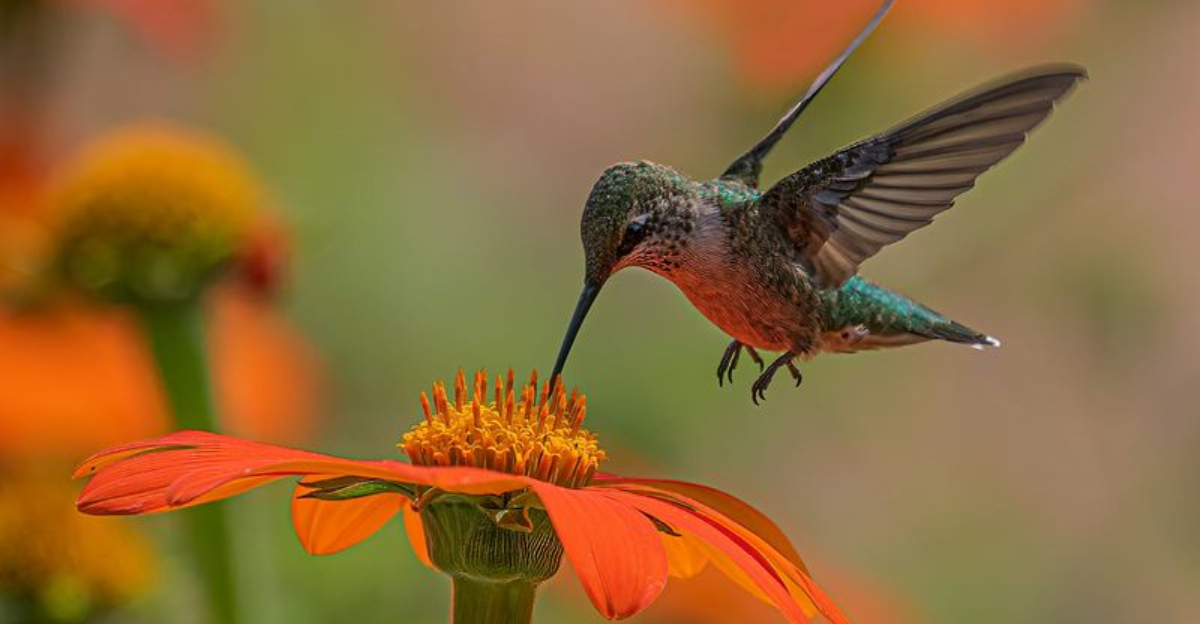
Ever noticed those tiny, jewel-like birds darting around your garden? Those aren’t just pretty flyers – they’re vital ecosystem workers!
Hummingbirds form incredible partnerships with flowering plants, creating relationships that have evolved over millions of years. While we admire their stunning colors and aerial acrobatics, these tiny powerhouses are actually keeping countless plant species alive through their unique pollination skills.
1. Specialized Bill Shapes Match Specific Flowers
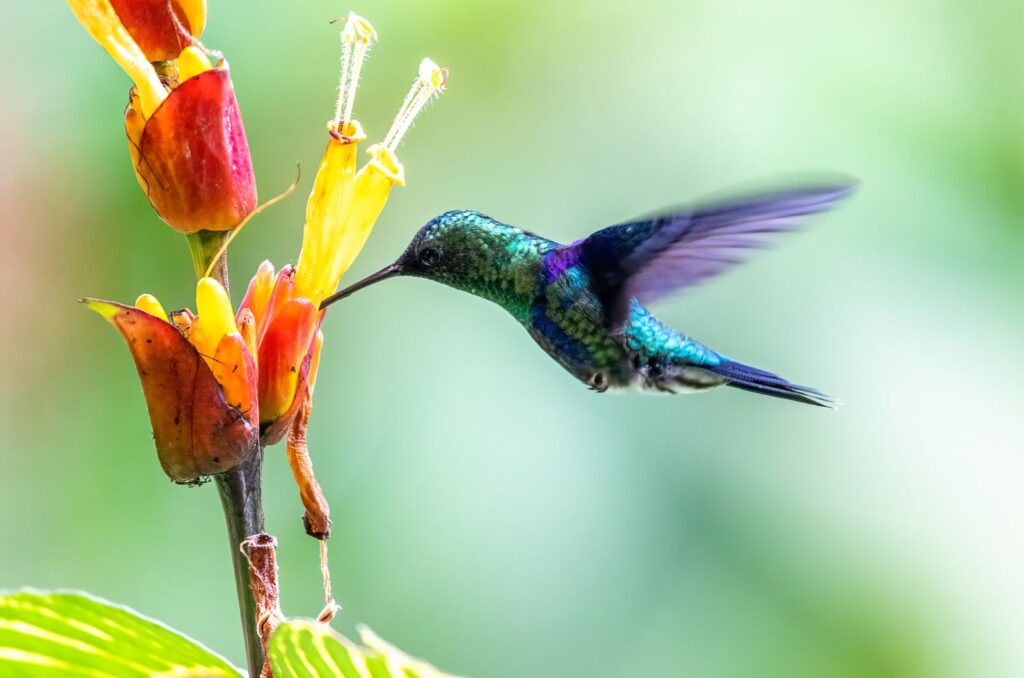
Nature’s perfect design shows up in how hummingbird bills evolved to match the flowers they feed from. Some species have long, curved bills for tubular blooms, while others sport shorter, straighter bills for different flower shapes.
This co-evolution means certain flowers can only be pollinated by specific hummingbird species. Without these perfectly matched birds, many plant species would simply disappear.
2. Carrying Pollen Where Bees Can’t Reach
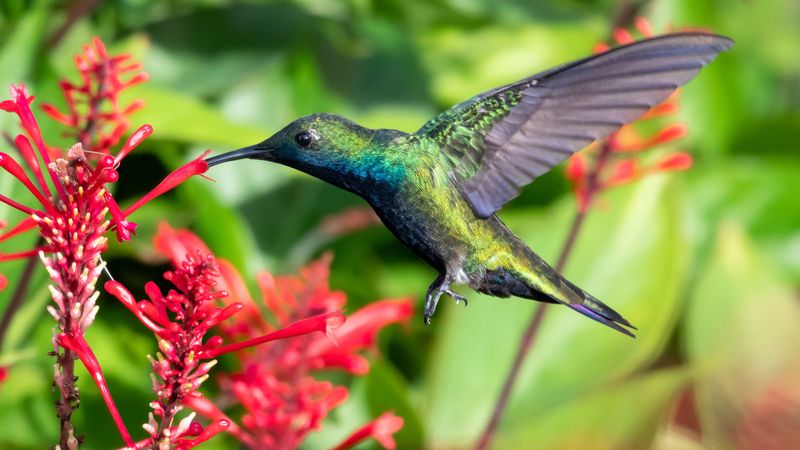
Many tropical flowers grow in shapes that make them inaccessible to bees and butterflies. Enter the hovering hummingbird! Their long bills reach deep into tubular blooms where other pollinators simply can’t go.
As they feed, pollen sticks to their foreheads and bills. When they visit the next flower, this precious cargo gets delivered, completing the plant’s reproductive cycle in places no other pollinator could manage.
3. Memory Champions Of The Bird World

Talk about smart shoppers! Hummingbirds remember which flowers they’ve already visited and how long it takes each bloom to refill with nectar. This remarkable memory helps them create efficient feeding routes.
For flowers, this means regular, reliable pollination service from birds that return at just the right time. Plants actually produce nectar on schedules that match their hummingbird pollinators’ feeding patterns!
4. Traveling Tremendous Distances During Migration

Some hummingbirds make jaw-dropping journeys of up to 3,000 miles during migration! The Ruby-throated Hummingbird even crosses the entire Gulf of Mexico in a single non-stop flight.
These epic travels help pollinate flowers across vast geographic regions. Plants along migration routes have evolved to bloom exactly when their flying pollinators pass through, creating a carefully timed chain of food sources spanning continents.
5. Rapid Wing Beats Create Perfect Hovering
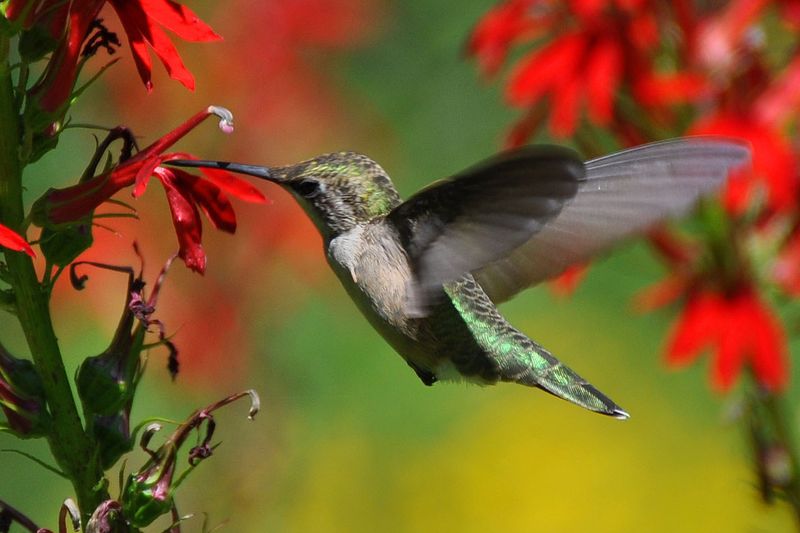
Beating their wings up to 80 times per second creates that signature humming sound and gives these tiny birds their incredible hovering ability. Unlike other birds, they can fly backward, upside down, and remain perfectly still in midair.
This aerial precision allows them to feed from flowers without landing, avoiding damage to delicate blooms while still collecting and depositing pollen efficiently. Many flowers have evolved specifically for this hovering approach!
6. Bright Colors Signal Mutual Benefits
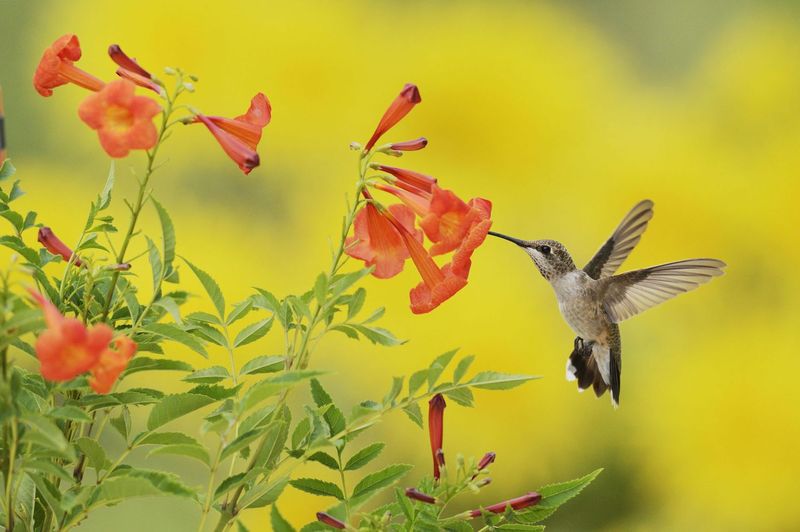
Red, orange, and pink flowers aren’t just pretty – they’re sending a specific invitation to hummingbirds! These birds see colors differently than humans and are particularly attracted to bright, warm hues.
Flowers have evolved these specific colors to attract their flying partners. Meanwhile, insects often can’t see red well, making these blooms specialized for bird pollination. It’s a perfect advertising system millions of years in the making!
7. Promoting Plant Genetic Diversity

Flying much farther between flowers than most insects, hummingbirds connect plant populations that might otherwise remain isolated. A single bird might visit plants miles apart during a single day!
This long-distance pollen transfer increases genetic diversity among plant populations, making them more resilient to disease and environmental changes. Healthier, more adaptable plant communities are the direct result of these tiny travelers’ work.
8. Saving Plants Through Nectar Robbing Prevention
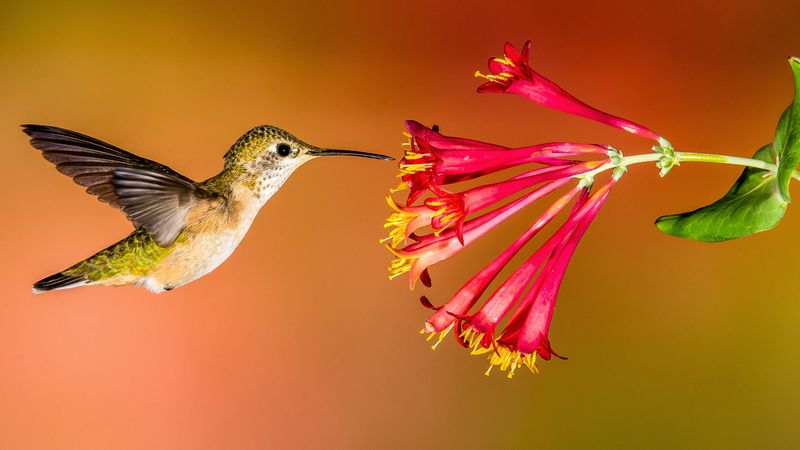
Some insects cheat the system by biting holes in flower bases to steal nectar without pollinating – called “nectar robbing.” Hummingbird-pollinated flowers have evolved defenses against this thievery!
Many have developed extra-long, curved tubes that only hummingbird bills can navigate properly. This ensures the plant’s reproductive success by guaranteeing pollen transfer in exchange for the high-energy nectar reward they produce.
9. Super-Charged Metabolisms Require Constant Feeding
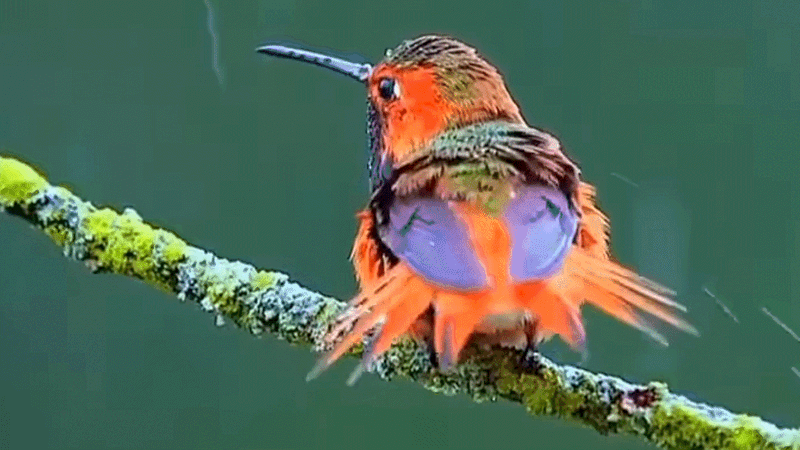
Running on nature’s fastest metabolism, hummingbirds must visit hundreds of flowers daily just to survive! Their hearts beat up to 1,260 times per minute, and they consume more than their body weight in nectar each day.
This incredible energy demand means they’re constantly moving from flower to flower. For plants, this creates a reliable, high-frequency pollination service that ensures their reproductive success far better than occasional insect visits.
10. Supporting Endangered Plant Species
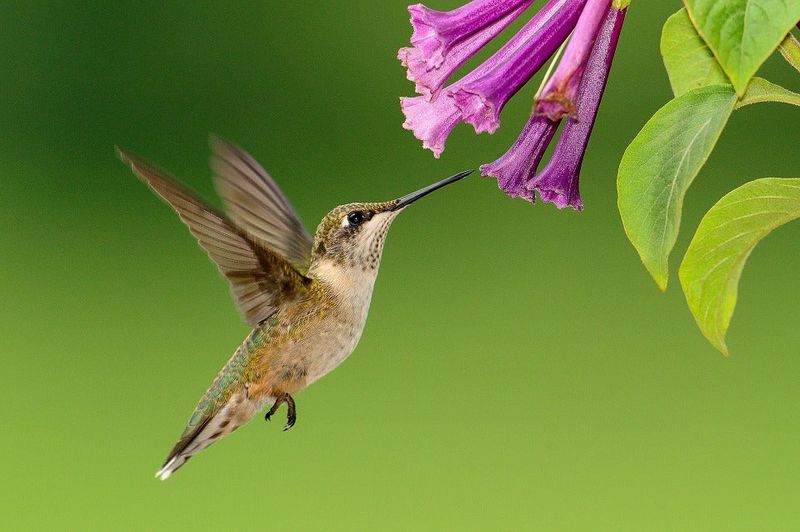
Some rare plants have such specialized flower shapes that only particular hummingbird species can pollinate them effectively. When these bird populations decline, entire plant species face extinction risks.
Conservation efforts now focus on protecting both the birds and their plant partners. In parts of South America, scientists have documented plant species that would completely disappear without their specific hummingbird pollinators.
11. High-Energy Nectar Production Specifically For Birds
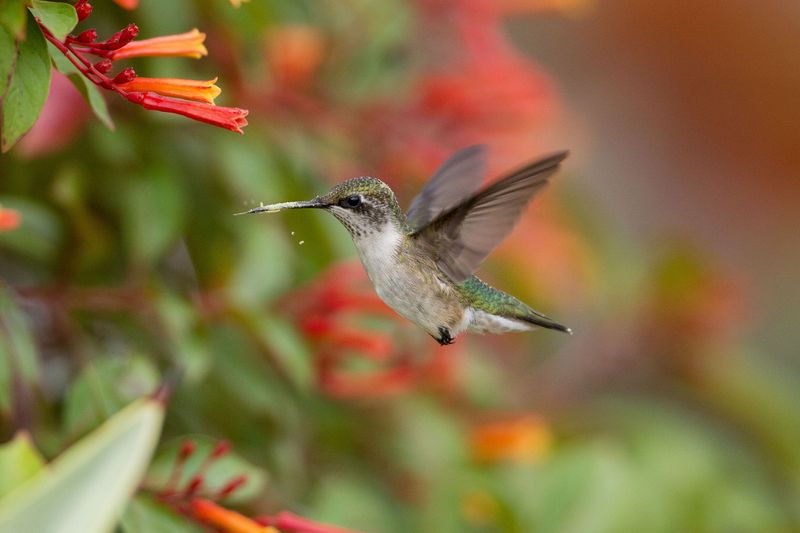
Flowers didn’t develop sweet nectar just to be nice! Hummingbird-pollinated blooms produce a specific nectar recipe – less sugar concentration than bee-pollinated flowers but much higher volume.
This special formula meets the birds’ unique energy needs while ensuring they’ll need to visit many flowers to get their fill. Plants have literally designed their nectar production around hummingbird metabolism, creating a perfectly balanced energy exchange system.
12. Helping Plants Adapt To Climate Change
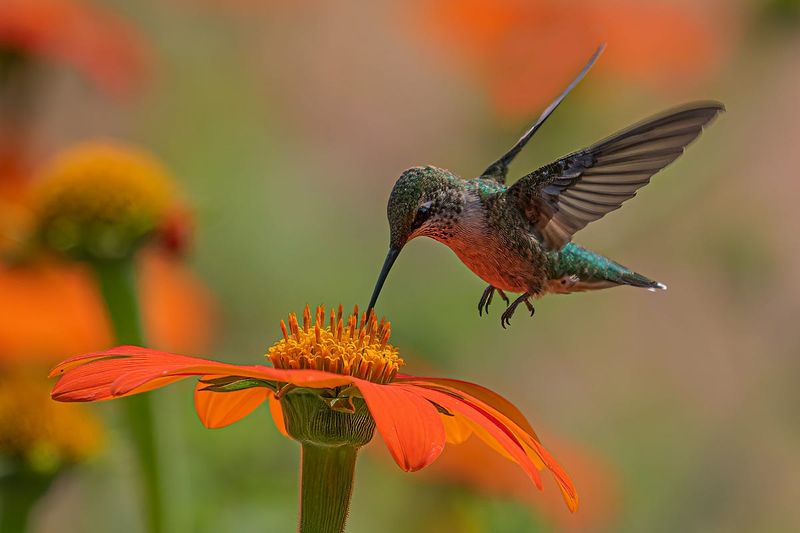
As temperatures rise globally, flowering times are shifting. Hummingbirds show remarkable flexibility in adjusting their feeding patterns to match these changes, helping plants continue reproducing even as conditions change.
Their ability to remember and revisit flowers that bloom at different times makes them crucial allies for plants facing climate disruption. Some species are even extending their ranges northward, bringing their pollination services to new plant communities.
13. Creating Plant Reproduction Insurance
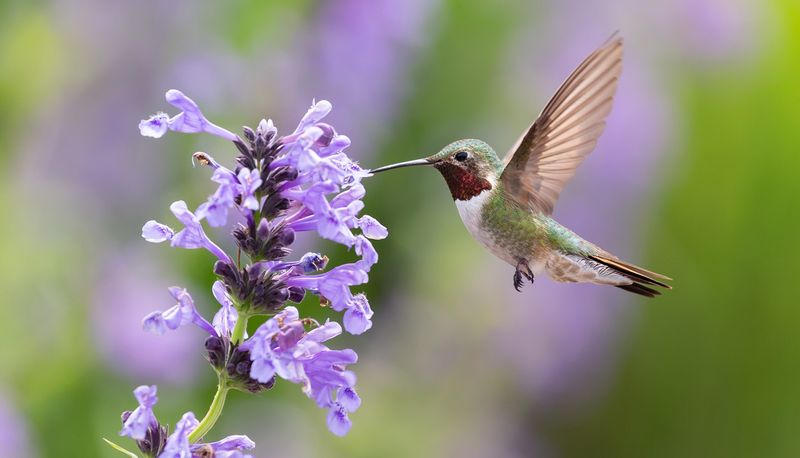
Smart plants don’t put all their eggs in one basket! Many species use both insect and hummingbird pollinators as a form of reproductive insurance against environmental changes or pollinator population fluctuations.
When bee populations drop during drought or disease outbreaks, hummingbirds can take up the slack. This backup system helps ensure plants continue reproducing even when one pollinator type becomes scarce, making ecosystems more resilient overall.
14. Defending Territories Around Favorite Flowers
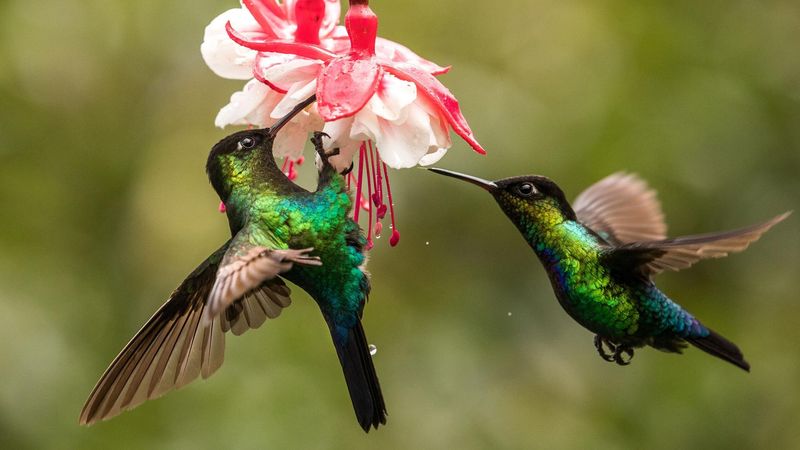
Despite their tiny size, hummingbirds fiercely defend flower-rich territories! A single bird might guard a patch of blooms, chasing away competitors in spectacular aerial battles.
For plants, this territorial behavior ensures consistent pollination from a regular visitor that knows exactly how to access their flowers efficiently. The defending bird becomes an expert at handling that specific flower type, improving pollination success rates compared to random visits.
15. Night-Blooming Flowers Rely On Special Hummingbirds
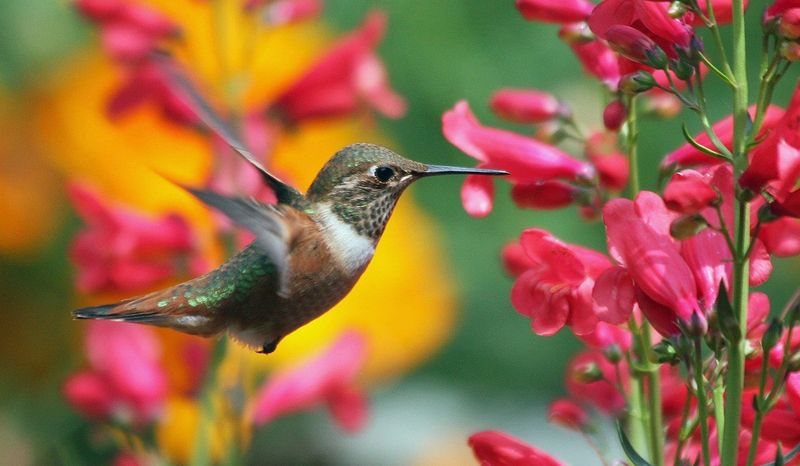
Most hummingbirds feed during daylight, but a few extraordinary species like the Hermit hummingbirds visit flowers at dawn, dusk, and even during moonlit nights! These special birds have evolved to fill a unique ecological niche.
Certain plants have adapted to this schedule, opening their flowers when these specific hummingbirds are active. Without these twilight pollinators, these unique plant species would have no way to reproduce successfully.

